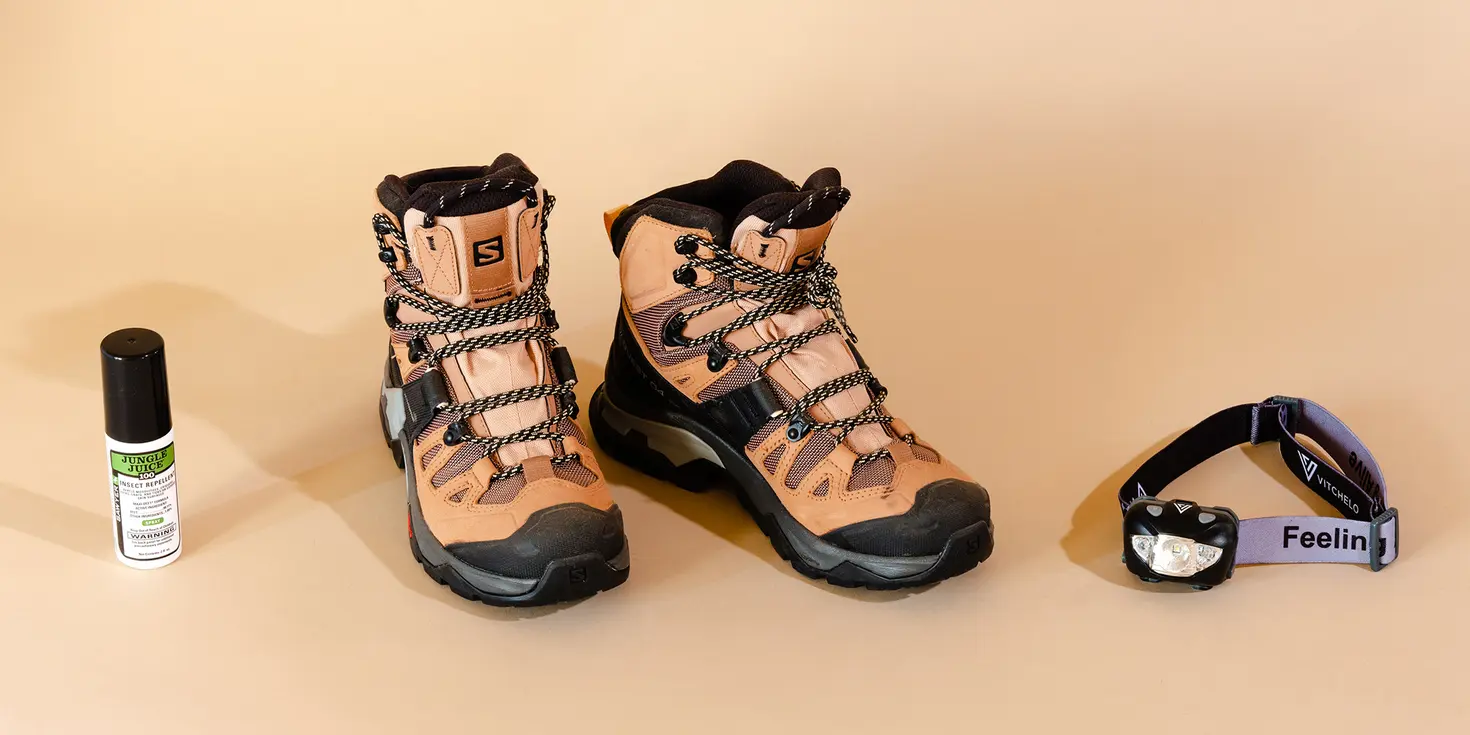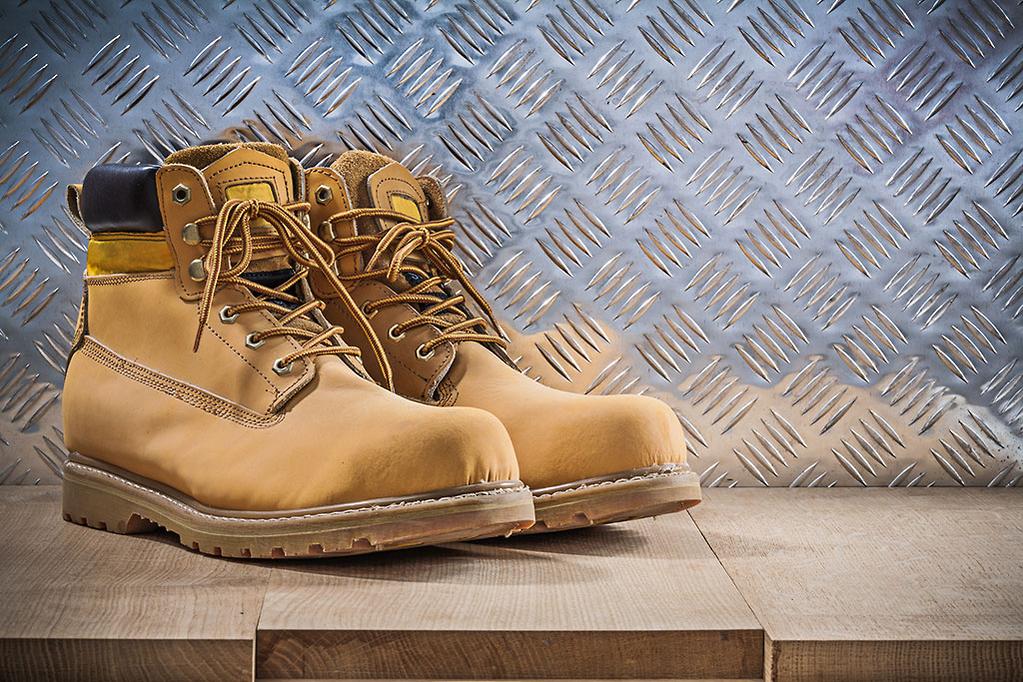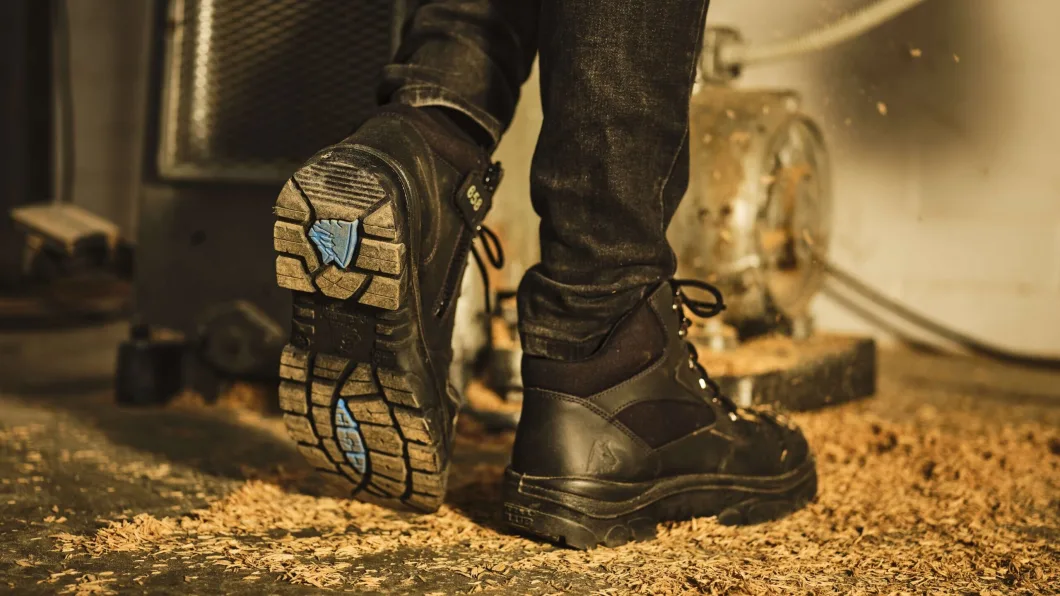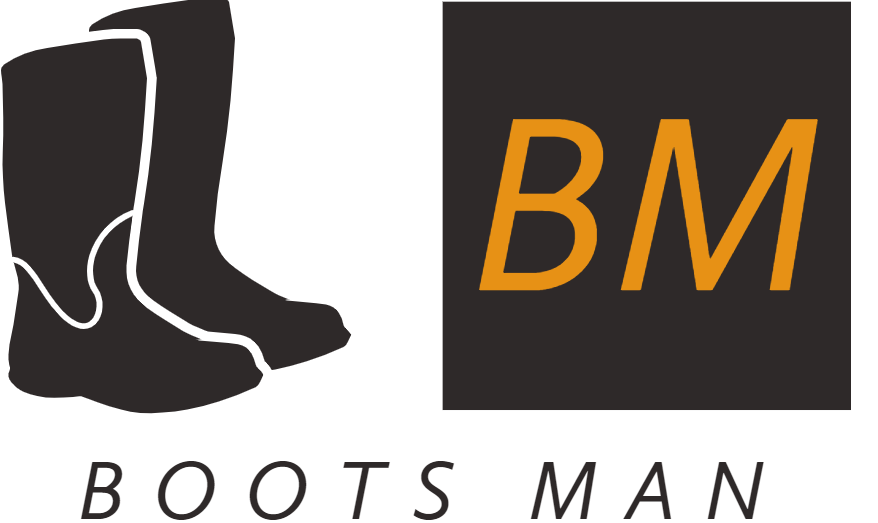Do you need a sturdy and reliable pair of work boots that offer superior ankle support? Are you overwhelmed by the sheer variety of work boots available on the market?
This comprehensive guide provides all the information you need to choose the perfect work boots for your feet. Look no further for reliable protection, comfort, and support!
This guide will provide information on how to properly identify, select and use work boots that provide the best ankle support for your job. We will discuss the importance of selecting the right sized and fit of work boot, as well as safety features that should be evaluated before making a purchase. Finally, we will go over tips for maintaining ankle support and proper foot health while utilizing work boots that have been correctly selected and fitted.
By following these guidelines, you can find the best work boot for providing superior foot and ankle protection, ensuring stability and minimizing fatigue while performing your job duties. It is critical to select a boot that is both comfortable and protective in order to maximize productivity and reduce long-term risk of injury or other health issues. We are here to help you make an informed choice in choosing the best work boot for superior ankle support!

Importance of work boots with ankle support
Choosing the right work boots with ankle support is very important, as it can greatly affect a person’s ability to perform their job safely and effectively. Whether working outdoors or in a factory, having boots with proper support for the ankles helps reduce the risk of injury and keep employees comfortable throughout the workday. Additionally, appropriate footwear also helps prevent fatigue and stress on joints and muscles caused by prolonged standing or walking.
When selecting a pair of work boots with ankle support, there are several factors to consider such as size, type of material used in construction of the boot, durability, and style. Different materials provide different levels of protection from various environmental hazards such as cold temperatures or wet conditions. Additionally, some materials tend to be more comfortable than others for those who engage in strenuous activities such as lifting heavy objects. Lastly, style is important when considering fashion trends amongst workers so that they may maintain a professional appearance while enjoying comfort at the same time.
Purpose of the guide
This guide is intended to provide an overview of the features and considerations to keep in mind when selecting work boots for ankle support. The primary purpose of the guide is to ensure that those buying such boots are able to make an informed decision that takes into consideration the specific conditions of their workplace and their individual needs.
This guide will offer advice on choosing the right style, fit, features, and materials that will provide lasting comfort and protection from injury. In addition, this guide will cover how to properly care for your work boots both during routine use and after long periods of wear or in harsher environments.
By using this guide, you can be confident that you’re purchasing exactly what you need—the best possible boot for your particular line of work environment and individual needs.
Features of Work Boots with Ankle Support
Work boots with ankle support are designed to provide increased comfort, protection, and shock absorption for your feet. The right fit and the right features can make the difference between work boots that last and those that don’t. Here are some of the key features to look for when buying work boots with ankle support:
Upper Support: Many work boot brands offer varying levels of stability from the upper portion of the boot. Look for models that have a combination of extra padding and a more supportive upper portion such as padded collars. This is important for providing additional cushioning and stability around your ankles during labor-intensive activities.
Outsole: High-quality outsoles will provide additional shock absorption to help protect you from grating surfaces such as concrete or even gravel. Look for rubber outsoles with traction control technology (specialized tread patterns) which will help provide improved grip and better footing underneath you while on hazardous terrain or while performing other strenuous outdoor activities.
Material Construction: Look for boots constructed of high-grade leathers or modern composite materials such as Kevlar or carbon fiber, which are lightweight yet offer superior wear resistance compared to traditional materials like canvas or manmade fabrics. The upper materials also need to be durable enough to withstand years of wear and tear in order to maximize their lifespan.
Comfort: Quality work boots need not just look good but also need to feel good when standing or walking all day long. Many brands will feature extra support in key areas such as removable insoles, ergonomic shaping, comfortable hidden liner material and lightweight materials so you can remain comfortable on any job site all day long!
Types of ankle support
When it comes to work boots that provide ankle support, there are a few types of footwear available for different work applications. It’s important to understand the different types of boots that exist and their features to determine which type is best for your needs.
The following are some of the common types of ankle support available in work boots:
- Lightweight Support: Lightweight steel toe, composite toe and slip-resistant work shoes typically provide light ankle support with built-in cushioning. Most of these shoes are light enough for general walking but have enough protection for some light industrial jobs.
- Circumferential Support: Boots with circumferential supports can wrap all the way around the foot and may offer more arch protection than lightweight styles. These generally come in taller styles, such as hiker or tactical designs.
- Rigid Ankle Brace: Boots with rigid, full foot and ankle braces offer maximum protection against breakages or rollovers. The external frame is designed to keep the foot stable and aligned while providing a protective cushion at each point where movement occurs (leg, heel, ankle).
- Internal Shock Absorption System: Some manufacturers build internal shock absorption systems into their boot designs. This helps absorb impact and create stability in uneven terrain while supporting the musculoskeletal system from joints up to spine alignment.
The purpose of these different levels of ankle support differ by design meaning many factors must be taken into consideration when selecting a boot for your specific needs including type of occupation/job hazards/environment you’re working in and your own personal preferences/comfortability level.

Materials used in work boots
Work boots are available in a range of materials, and selecting the right one will depend on your job requirements. The upper part of the boot may be made of leather, rubber, canvas or fabric. Leather is probably the most popular choice for work boots as it is durable, flexible and has excellent protection from water and other hazards. Rubber is another great option as it provides excellent water protection and resists abrasion. Canvas can provide ventilation during warmer months but may not offer sufficient water proofing. For specialized winter boots, fabrics like Gore-Tex or Cordura may be used to provide warmth while remaining lightweight and offering breathability.
The internal sole of the boot should also provide good support for your feet and ankles while providing some shock absorption when you’re walking on hard or uneven surfaces – look for boots with cushioned insoles or gel inserts for ample cushioning. Steel toe caps are also available if you’re working in a hazardous environment; these reinforced toecaps will protect against impacts from dropped objects as well as crush injuries such as stepping on a nail or jackhammer. Many toes caps also incorporate composite materials which offer more flexibility than steel but are equally tough – check out composite toe caps if you need slightly more maneuverability in your boot.
Slip-resistant soles
Slip-resistant soles are an essential feature when selecting work boots to provide ankle support. While many people consider regular shoes to be slip-resistant, the outsole of a good pair of work boots has special features that provide extra traction and grip on wet, slippery surfaces. Look for outsoles with tread patterns designed specifically for high slip resistance and reinforced heels, toes, and/or midsoles to minimize impact shock as well as providing extra cushioning and stability.
In addition, a good pair of safety toe boots will usually have an antimicrobial footbed that resists bacterial growth and provides maximum breathability in order to keep feet dry even in wet weather conditions. Make sure to look for boots with stitchdown construction for better durability and flexibility which provide superior support for pushed off of movements like running up or down stairs.
Slip-resistant soles are one of the most important components when purchasing safety toe shoes offering ankle support as they secure your footing reducing the risk of slipping or falling.
Steel-toe protection
Steel-toe boots are an important part of any job requiring hard labor. When looking for work boots for ankle support, be sure to select a boot that also offers steel-toe protection. This extra layer of safety prevents toes from being crushed or injured in the event of a heavy object falling on the foot. Steel-toe protection is often indicated by the letters “ST” stamped on the side of the boot.
It is also important to make sure that your steel-toe boots fit properly and comfortably to prevent injury while you work.
Waterproofing
For those doing outdoor work, waterproofing is a key consideration. It pays to find out how waterproof the boots are – the types of leather and other materials used. Pay close attention to the adhesive used, as well as any liners or coatings. Compare reviews to learn how well these features hold up in wet environments.
Make sure to look at the soles too as they can indicate breathability and slip-resistance. While these features might not be obvious upfront, it is key that you understand what makes your boots leak proof and long-lasting. A good starting point is to look at sealed seams, rubber outsoles and specific coatings for waterproofing such as GoreTex or DuraShield Laminated Leathers which protect against water entry but maintain breathability.

Maintaining Work Boots for Ankle Support
Maintaining your work boots is one of the most important steps in ensuring that your ankle is well-protected. Maintaining proper boot care will help to ensure the long-term comfort and durability of your boots, as well as allowing them to remain effective in providing support for your ankles. Here are some tips on how to maintain work boots for ankle support:
- Clean them regularly – Regularly brushing off dirt and dust from the exterior of the shoe, along with wiping away any moisture that accumulates, can help to keep your work boots in good condition for longer. If a more thorough cleaning is needed, it’s best to use a damp cloth and a mild soap solution.
- Deodorize – Odors tend to set in more quickly when wearing workboots on a daily basis, so it is recommended that you employ regular usage of a deodorizing product such as cedar shoe trees or foot odour powder.
- Replace insoles when needed – Insoles should be replaced every 6 months or so depending on usage without fail if you would like optimal protection for your foot and ankle. This will prevent any discomfort or pain due to worn insoles no longer providing adequate cushioning against pressure points or shock absorption when walking around on hard surfaces.
- Rotate shoes between uses – This helps by allowing one pair of shoes time to dry out between uses, as moisture inside the boot can cause odours and microbial growth which can also be unhealthy for feet in general. To maximize their life span make sure you don’t exclusively wear one pair even though they are comfortable, rotate among two or three pairs instead!
Cleaning and conditioning
Good care of your work boots is essential to maintaining their integrity and longevity. Consistent cleaning and conditioning will help remove dirt and moisture and preserve the material of the boots, protecting it from damage or cracking. Cleaning should be done regularly, about once a month, with warm water mixed with soap or mild detergent around the exterior of the boot. If using leather boots, use a leather cleaner specific to that material to ensure proper care is taken of the delicate leather surface.
Before conditioning your boots, apply an external waterproofing spray on footwear made with canvas materials.
Conditioning should be done after cleaning your work boots (and replenishing them with an external waterproofing spray as necessary). Use a soap-net sponge or soft brush if possible during this process. Apply a light coat of conditioner over all areas; ensure even coverage using circular motion strokes, paying particular attention to any stitching details on your boots. Special attention should also be given to creases or wrinkles to condition hard-to-reach places in order for maximum protection against long-term water absorption damage. Most conditioners are oil-based and require time for absorption into the fabric—this can range from half an hour up to twelve hours depending on type used .
Ensure that you follow manufacturer instructions for even coverage across all areas of your work boot exterior before lacing up once more!
Replacing worn out parts
When the parts of your work boots are beginning to show signs of wear and tear, it is time to look into replacing them. Not only will worn out parts of your work boots reduce the benefit they offer in terms of support and protection, they can also cause discomfort while wearing them.
Here are some things to consider when it comes time to replace the parts of your work boots:
-Insole: The sole inside your work boot helps to cushion shock when walking or running and increase comfort while being worn. Having a properly fitting insole will help promote proper alignment of the ankle, helping to reduce pain and discomfort.
-Heel counter: The heel counter provides stability to the heel area by creating a snug fit when tied correctly. It helps prevent excessive movement which can cause blisters and other forms of irritation on the heel area.
-Lace grommets: Laces should be replaced regularly as part of routine wear and tear caused by daily use, especially if they are frequently in contact with moisture or dirt. Grommets should be properly aligned with each other as well as tightly secured for a snug fit that promotes ankle support with every step taken.
Outsole: The outer sole is made with special materials designed for wear resistance in order to provide optimal traction on different surfaces during activity or regular wear. Check for signs such as cracks, warping, and unusual patterns that could be caused by premature deterioration so that you can replace them quickly before wearing them too far down causes any pain or discomfort from blisters due to sliding inside the shoe instead slipping properly but securely on a clean surface.
Storing properly
After you have chosen the appropriate boots for your workplace needs, it is important to store them properly. Storing them the right way will ensure that you get the most out of their wear and that they last as long as possible. To prolong the life of your work boots:
-Clean them thoroughly after every use. This helps remove any dirt or grime that may be sticking to the material and prevents dirt from further damaging it.
-Stuff newspapers into each boot to help maintain their shape when storing. Wherever possible, avoid storing them in direct sunlight or in humid conditions as this can damage their material.
-If they are leather boots, use a conditioning cream or oil at least once a month on both the inside and outside sections of the boot to keep them supple and softening any cracks in drying leather. Use neutral colored products that match the shade of your shoe to avoid any staining.
-Polish regularly with a shoe polish designed specifically for leather work boots of your shade if needed, but avoid polish buildup during polishing which can manage stiffness and break down seams if there is too much accumulation. Squeezing some water resistance wax into nooks and crannies around seams can also help maintain waterproofing repellancies over time.
-Alternate between two pairs regularly so that neither pair becomes overused while one gets neglected at home; by doing either one’s footwear would stay comfortable while increasing lifespan drastically!

Conclusion
Finding the right work boots for ankle support can be a challenge, as there are many different types and styles of boots available. However, as long as you consider factors like the material, fit and design of the boot, it is possible to find a pair that will offer your feet the protection and stability they need in any work environment.
Additionally, implementing an effective care routine can help increase the lifespan and quality of your boots. Taking all these factors into account will ensure that your feet stay comfortable and safe while you perform any job.
FAQs
How do I find the right fit for my work boots?
Finding the right fit for work boots involves measuring your foot size, trying on different sizes and styles, and ensuring the boots feel snug and comfortable.
What is the best safety shoe for ankle support?
The best safety shoe for ankle support should have a high-top design, good padding, and a sturdy sole. Steel-toed boots can also provide added protection for the feet.
How to fit ankle boots?
To fit ankle boots, measure your foot size, choose the right size, and ensure the boots feel snug but not tight. Walk around in them to test their comfort and flexibility.
Should work boots be bigger or smaller?
Work boots should be slightly bigger than your regular shoe size to allow for thick socks and foot swelling during the day.
Should you get work boots half size bigger?
Getting work boots half size bigger can be helpful to accommodate thick socks and ensure comfort during long work hours.
How do I choose my boots size?
To choose your boot size, measure your foot length and width, consider the type of socks you will wear, and check the size chart for the brand you want to purchase.
How do I choose a boot for me?
When choosing a boot, consider the intended use, the level of support and protection needed, the type of sole, and the style that suits your taste.
Should boots be tight at first?
Boots should feel snug but not tight at first. Leather boots will stretch and conform to your feet with wear, ensuring a comfortable fit.
How do you wear ankle boots for work?
To wear ankle boots for work, choose a style that is appropriate for the workplace, pair them with work-appropriate clothing, and ensure they are comfortable for all-day wear.
What should I wear to protect my ankles?
To protect your ankles, wear boots or shoes with good ankle support, avoid high heels, and consider wearing ankle braces or compression sleeves if you have a history of ankle injuries.
See Also :
- Best work boots for mud 2023
- Best zipper work boots 2023
- Best irish setter work boots 2023
- Best work boots for neuropathy 2023
- Best work boots for summer 2023

